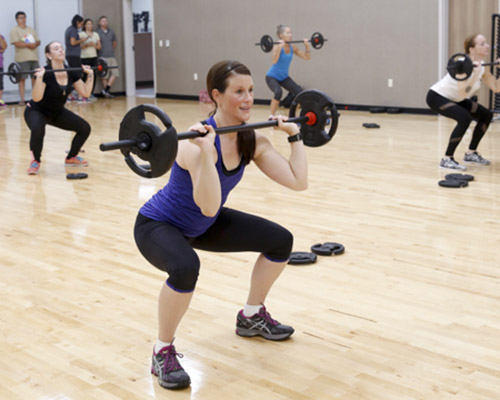Squats
Squats are a major staple when it comes to resistance training. They can range from body weight to an extremely heavy one rep max with a barbell. There are many variations of squats and each individual may find some versions more agreeable to their body type or workout than others. Whichever type you choose, they are important to our everyday movement. Some things as seemingly simple such as sitting down on a chair or getting up and down off the floor can degrade as we age. Whether you’re just learning or you’ve been squatting for years, these three basic tips may be able to aid you on your journey.
Stretch.
Range of motion is imperative. While it is true that just holding a weight in a static position or squatting only a quarter of the way down can serve a beneficial purpose, it is more realistic to focus on improving and maintaining as much range of motion as possible. This means that you may want to hold off on squatting the heavy weight until your are able to squat at a full range of motion. Ideally, dropping your hips below parallel or eventually down to your ankles while keeping your chest above your waist and without lifting your heels off the floor. This does not mean that every time you practice squats you are required to drop below parallel, but developing the proper flexibility will benefit you in the long run. Do don’t go dropping yoga for weightlifting just yet. As a matter of fact, yoga will only aid in your weightlifting quest. Focus on stretches that include low back, glutes, hamstrings and quadriceps.
Plyometrics.
Explosive movements will help improve your ability to power through your squat and will train more fibers of each muscle to fire all at once increasing your ability to handle more and more weight. Box jumps are key here. Focus on gradually increasing how high you can jump. Land quietly and controlled for 3 sets of 10 repetitions before attempting a new height. Box jumps can be terrifying for some and it is definitely ok to begin with just a vertical jump until you feel comfortable enough to start jumping on a low level box. Progress is progress no matter how small it may seem in the beginning!
Volume.
In order to increase strength and weight you must challenge yourself as well as train your muscles to resist heavier weight. After you are absolutely sure that your squats are performed with good body mechanics, you are ready to find your current one rep max. This weight will be your guide to find percentages to base your workouts. Working sets can be between 70-85% of your 1 rep max for short sets. Depending on the percentage, you could be performing sets at only three reps at a time. A smaller percentage constitutes more reps per set: up to 8 or 10. This takes some trial an error of course, paying close mind to your form as you go heavy or begin to fatigue.
All these tips are useful so long as your body is in normal condition. Obviously, certain surgeries, injuries or ailments may prevent you from performing these exercises. If there is ever a doubt, it is wise to consult your physician first for medical advice or possible modifications. If squats are new to you, try joining a group exercise class or hire a personal trainer for a few sessions to guide you and prevent you from accidentally falling into bad habits that may cause more harm than good. Happy New Year and happy squatting!
Example of Squat Program:
Week 1:
Monday: Work up to 1 rep max
Wednesday: 3 sets of 8 reps at 70%*
Friday: 3 sets of 6 reps at 75%*
Week 2:
Monday: 3 sets of 6 at 75%*
Thursday: 3 sets of 5 at 80%*
Week 3:
Monday: 3 sets of 3 at 85%*
Wednesday: 1 set of 3 at 90%*
Friday: Work up to 1 rep max
*Never begin the work out at your working weight. Warm-up with a lighter weight and gradually work up to your desired percentage.
